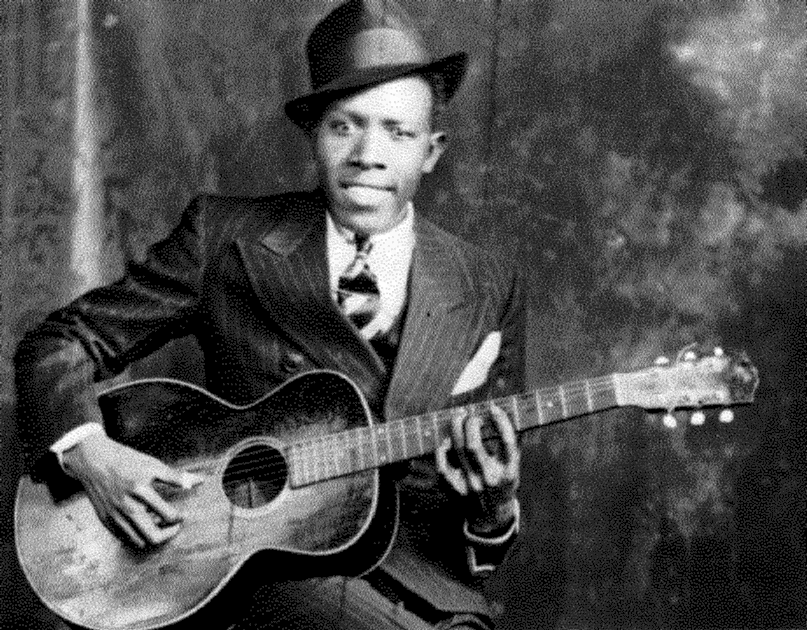“Sometimes you want to give up the guitar, you’ll hate the guitar. But if you stick with it, you’re gonna be rewarded.”
– Jimi Hendrix
Some people think of them as rockstars, some as hippies. Some see them as musicians while some think that they were just born to be noisy. Guitarists have always been judged differently but one thing which everyone will agree is that guitar has become one of the most crucial instruments in the music industry today. Whether it is blues or jazz, rock or metal, this gleaming instrument is being employed everywhere with various technologies assisting to mould its sound. Today about 20-30 percent of college going crowd in our country picks up this instrument and goes through with learning it; some taking it up seriously and some just doing it to impress the girl next door.
Being a guitarist myself, I have jammed with lots of other guitarists, playing different genres and the diversity has always interested me. Guitarists have evolved from playing blues in the early years of the twentieth century and have taken different directions to create huge number of genres which we all listen today. Guitars have remained the same six string instruments with a wooden body (mostly!); what partitions the genres is the man who plays it.
We’ll be going through various stages of evolution of guitarists in my next few articles. This one features the wild blues artists from the 30s-50s. So let us see how our ancestor guitarists have fabricated a path for the kind of guitarists we see today:
30s-50s – The Era Of Crazy Blues
This was the period which introduced us to the likes of Robert Johnson, Muddy Waters, Elmore James, Link Ray and lots more. Although blues manifested in the late 1800s, it wasn’t until mid-thirties, that it acquired a whole new character. It was the time when the delta blues guitarist, Robert Johnson, came up with his landmark recordings like ‘Kind Hearted Woman Blues’ and ‘Cross Road Blues’ based on simple 12-bar blues progression and absolute soulful vocals. His contribution paved way for all the upcoming musicians and genres and he is most often regarded as the most important blues musician that ever lived. In fact, he is honoured by every guitarist that you come across as blues is the root of every kind of music you hear today.
Muddy Waters was another influential guitarist from the 40s whose music incorporated elements from R&B, blues and jazz with added drums to develop rock ‘n roll. His tracks ‘Mustang Sally’, ‘I’m The King Bee’ and ‘I’m The Blues’ are considered as big influences for Rock ‘N Roll and The Rolling Stones were named after his ground-breaking track ‘Rollin’ Stone’. 1950s saw the increased use of electric guitars, often played on overdrive. Elmore James is one such guitarist, who is known as “the king of slide guitar”. He is recognized for his famous track ‘Dust My Broom’ which displays effervescent slide guitar harmonies play on a his unique amped tone. Another prodigy from the 50s would be Link Wray, who introduced power chords to rock music with his track ‘Rumble’ and without him, we would never have had experienced heavy metal or hard rock.

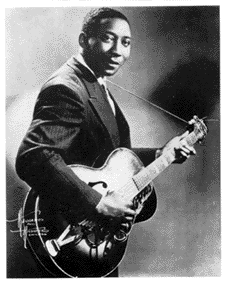
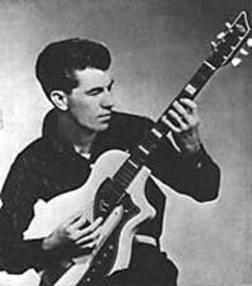
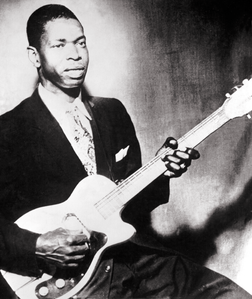
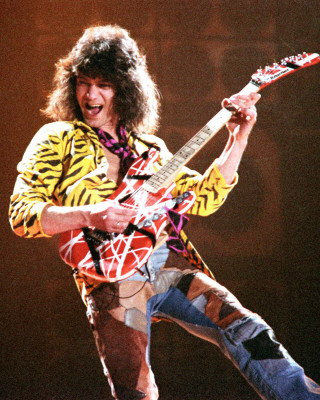
While we talk of blues we should not forget the two people whose songwriting and guitar skills have been perceived by many to be revolutionary: BB King and Chuck Berry. These two have majorly influenced rock music by coming up with structured songs and sophisticated solos which incorporated frivolous bends, slides and vibratos. These two legends have had a career of over 60 years and are still active.
One more checkpoint which was crossed in this era was the invention of sweep picking by jazz guitarists Chuck Wayne and Tal Farlow in the 40s, which later turned out to be one of the most famous techniques used in solo playing.
This particular section reminded me of a quote by Keith Richards from The Rolling Stones: “If you don’t know the blues… there’s no point in picking up the guitar and playing rock and roll or any other form of popular music.”
So do you!?
60s – The popularization of band culture
As we proceeded towards the sixties, we witnessed a flourishing culture of bands. Formation of bands influenced guitar playing at a very large scale. While playing in a band, a guitarist has to come up with definite progressions and a fixed song-structure; this led to introduction of “guitar riffs”. One of the very first and most popular commercial bands would be The Beatles, who I believe need no introduction. The guitar works of “Fab Four” constituted various influences from rock ‘n roll, pop, rock, psychedelic and ballads and inspired formation of a lot of bands like The Rolling Stones, Beach Boys, Pink Floyd, Cream, The Yardbirds etc. Their songs were mostly based on simple scales, often utilizing the very basic major and minor scales in their songs, for e.g. ‘Love Me Do’, ‘P.S. I Love You’, ‘I Want To Hold Your Hand’, ‘I Should Have Known Better’ and many other uncountable hits.
Another ace from the era whose name was promulgated all over the streets of London as ‘God’ is Eric Clapton. Clapton is considered as one of the most influential guitarists of all time. Having played for bands like Cream, The Yardbirds and Derek and the Dominos, his musical style was influenced from a variety of music ranging from blues and reggae to rock and mellow jazz. With tracks like ‘Layla’, ‘Crossroads’ (Robert Johnson cover), ‘Wonderful Tonight’ he fabricated a route for classic rock bands with his unique tone selection and solo playing which had total distinctive arpeggios and licks. And another member of the Club 27, Jimi Hendrix was the master of overdriven guitars, often played on high amount of gain and volume. With his inverted right-handed guitar, he not only popularized the use of distortion but also displayed skilled usage of wah-wah pedal and developed the technique of feedback. His music heavily influenced heavy metal, psychedelic rock and acid rock.
70s and 80s – Classic rock and heavy metal
In my opinion, seventies and eighties were the two most revolutionary decades in the history of music. With boom in technology and development of so many techniques in the 60s, guitarists had ample resources to bring reformation in the music industry, especially in rock. In the seventies, the legendary Jimmy Page of Led Zeppelin contributed a lot to hard rock, progressive rock and heavy metal. His compositions often incorporated blues licks and progressions embedded in a rock ‘n roll wireframe. He popularized the use of double-neck guitars (12-string and 6-string), used various kinds of effects (in the famous song, ‘Kashmir’ played in Open Dsus4 tuning) and even used a violin bow with a guitar. With masterpieces like ‘Stairway To Heaven’, ‘Babe I’m Gonna Leave You’, ‘Whole Lotta Love’, he’s not doubt one of the most heavy contributors in the history of rock music.
Talking about effects and technology, Pink Floyd were the most advanced in their time and even today, their records are praised by engineers all around the world. David Gilmour often placed long and well-structured solos in each song and probably made “guitar solo” a key feature in a rock song. Pink Floyd were also one of the first progressive bands along with Rush and Deep Purple. With proper smooth distortions, a lot of guitarists took lead guitars to a whole new level. Eddie Van Halen, one of the most influential lead guitarists, introduced his signature tapping technique with the track, ‘Eruption’, which is now picked up by every metalhead today. He also pioneered the use of movable bridge. Earlier tremolo bars were used by guitarists but that was just for vibrato purpose; Van Halen initiated the use of Floyd Rose to create various effects like dive bomb and pitch shift.
Seventies also introduced us to a phenomenon called heavy metal. Black Sabbath, the pioneers of heavy metal, were formed in late 60s and released their first album in 1970. Tony Iommi is often regarded as creator of heavy metal for his boundless ability to compose riffs. Palm muting and power chords were some of the notable entities that can be observed in his compositions. Another band who pioneered heavy metal is Iron Maiden. Their songs assimilated similar entities but with more speed and complexity. Although the songs were pretty heavy, the real chugging heaviness was brought into music by a band called Venom. Their music fused large amount of intensity with heaviness which influenced the immediate subgenres of metal like Thrash Metal, Death Metal and Black Metal.




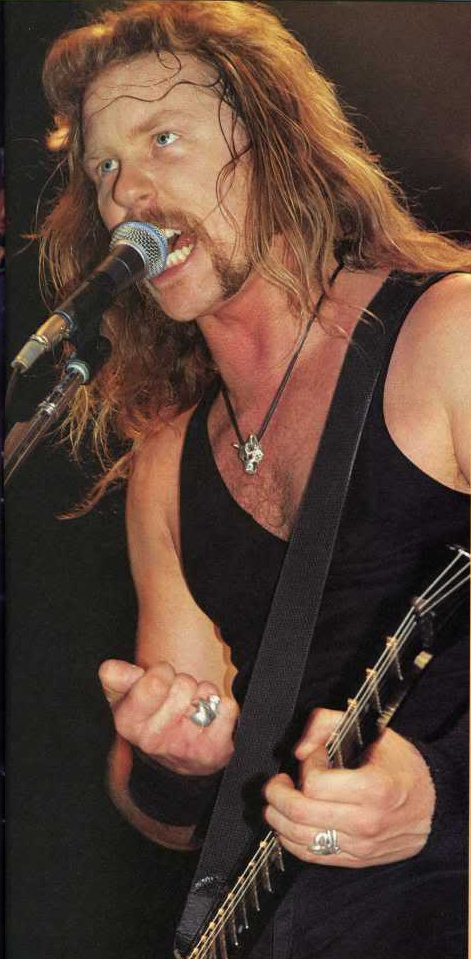
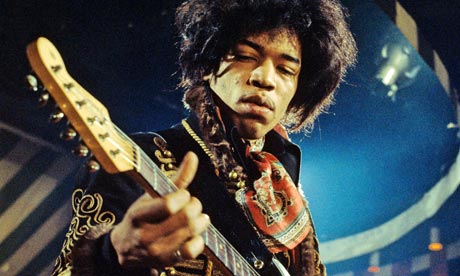

In the beginning of 80s, metal started spreading like a virus and within a short span of time, a lot of bands were formed. Bands like Metallica, Megadeth, Slayer, Kreator and Sodom came up with alternately picked intense palm-muted progressions and some really fast solos. James Hetfield of Metallica popularized down-picking of riffs instead of alternate picking to give a more neat sound to a riff. It can be noticed in their trademark song, ‘Master Of Puppets’, all throughout. Soon these riffs transformed into more complex and deeper progressions and they were coupled with harsh vocals to form Death Metal. Chuck Schuldiner of Death is known as “The Father of Death Metal” and is of the most influential people in metal industry. Though most of early death metal bands were based on Thrash Metal, a band called Cannibal Corpse chose to make the songs more complex and more brutal with a lot of technicality and they often use low-tuned guitars to get a deeper and heavier sound.
90s and later
After incorporation of a lot of techniques and expanded use of guitars from blues to all these genres, people continued to use these techniques to come up with innovative music. Kurt Cobain combined simple power chords to make some powerful and intense songs. The songs, in spite of being simple, influenced a large bunch of punk rockers to form new stuff. Metal kept on expanding with coming up of genres like Melodic Death Metal, Groove Metal, Power Metal and Neo-classical Metal and still escalating to form totally new styles of music. Alexi Laiho from Children Of Bodom uses classical scales to compose music and construct his solos and is one of the pioneering forces in Melodic Death Metal. Progressive Death Metal band, Opeth’s Mikael Akerfeldt uses a lot blues and mellow jazz elements in his songs along with groove laden heavy riffs to give the listener a totally different experience.
Guitarists today have made a perfect balance between technicality and melody. They tend to go towards more progressive and heavier sound that include polyrhythms and odd time signatures. Many artists have started to use low-tuned guitars in order to achieve a heavier sound. The sound is becoming more and more processed, especially with an explosion in digital sound processing.
Guitarists in India
India has grown so much in these years. Earlier a music concert was something that happened once in a blue moon but every city in our country is becoming a host to these concerts and it is becoming tough for us to even keep a track of all of them. With such an expanse, a lot of people have started to learn guitars and a number of bands are being formed and many new things are being offered here. Going back in the 90s, Parikrama is one of the earliest bands in India. It was founded in 1991 and its music constitutes of beautiful guitar melodies drawing influences from the likes of Pink Floyd (post-Waters era) and Joe Satriani, with an exemplary essence of Indian Classical Music. Another band which formed around that time is the rock band Indus Creed which displays gracious guitar melodies and some marvellous solos. Their sound is also very much influenced from progressive artists.
One of the most recognized guitar players in the Indian scene is Baiju Dharmajan, who is famous for his work with the rock band Motherjane. With tracks like ‘Fields Of Sound’, ‘Maya’ and ‘Soul Corporations’, the band demonstrates a strong influence of carnatic music, with guitar melodies often sounding like Indian classical pieces. Another guitarist from the Indian rock scene is Warren Mendonsa. He has worked with Zero in the past and is currently working on a solo project named as Blackstratblues. His music incorporates elements from blues, jazz and rock ‘n roll and his instrumental work is widely recognized by people all over the country.
Apart from them Amyt Dutta, known for his works with his band Shiva in the 1980’s, is one of the most respected Indian guitarists around. He is often regarded as one of the most innovative guitarist in the Indian scene. R. Prasanna is one of the leading Carnatic guitarists in India. He is only the second guitarist to take the Carnatic classical stage after Sukumar Prasad. He is a graduate from the prestigious Berklee School of Music, Boston and he is the founder and president of Swarnabhoomi Academy of Music, India.



Coming onto metal, Dying Embrace is one of the earliest underground extreme metal bands in India. With Black Sabbath as their main influence, their guitar riffs often sound like typical Sabbath tracks played on heavier distortion to create a more skull-pounding sound. Another band from Bangalore is the Old School Heavy Metal band, Kryptos who have received international recognition and is one of the most respected bands in the country. Nolan Lewis and Rohit Chaturvedi, being the guitarists, draw influences from Kreator, Judas Priest and Iron Maiden, and often come up with harmonized guitar melodies.
A lot of bands have been formed recently and we can witness a lot of commendable guitar work by them as well. Guitarists tend to achieve that modern, heavy and progressive sound that exhibits nice amount of dynamics. Although there is a lot of constructiveness in the compositions, there is no variety being offered. Guitarists often end up using 7-string guitars unnecessarily and have developed an extravagant addiction to groove. It’s only rare that we get to witness a death metal band playing the music in a way it was meant to be.
The way guitarists have evolved truly surprises me and within just a few decades they have moved from simple 12-bar blues to polyrhythmic progressions; the plain sound of an acoustic guitar turned into digitally manipulated mechanical noise. But I guess that’s how our sound has evolved and it was meant to be. Is it good or bad is a question for another day, but for now, we can always go back to listening to what we want to and the variety is seamless.

